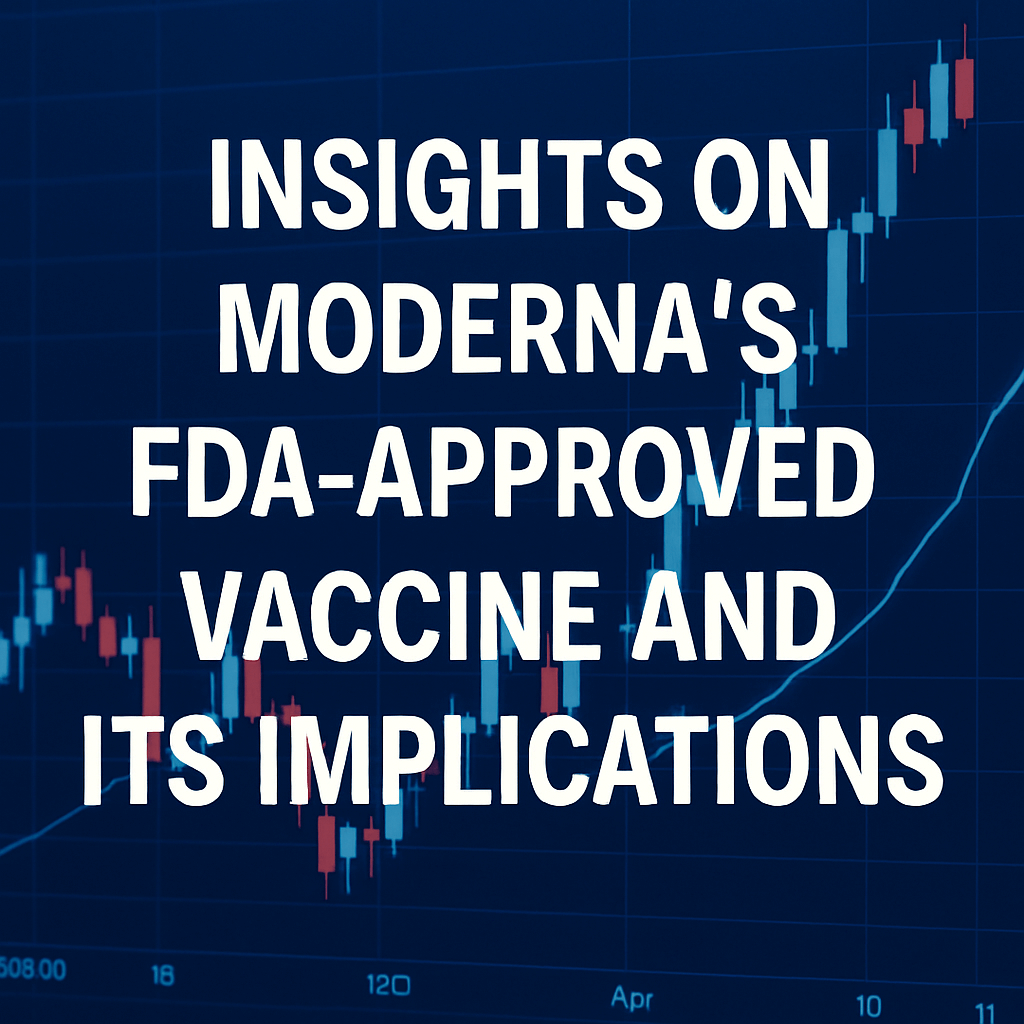Insights on Moderna’s FDA Approved Vaccine and Its Implications

Moderna announced over the weekend that the U.S. Food and Drug Administration (FDA) has approved its second-generation COVID vaccine, named mNEXSPIKE. However, this approval is restricted to certain populations: all adults aged 65 and above and individuals aged 12 to 64 with at least one underlying health risk as defined by the Centers for Disease Control and Prevention (CDC).
Scope of the Approval
This latest vaccine marks a shift from previously broader access; Moderna’s original COVID vaccine was available to anyone aged 12 and older. The narrower parameters for the new approval align with recent FDA statements indicating a likely reduction in vaccine access for healthy children and adults under 65 this upcoming fall season.
Notably, Health Secretary Robert F. Kennedy announced the intention to remove COVID vaccinations from the federal schedule for children and pregnant women. Contradicting this position, a recent CDC update maintained that vaccinations should remain on the immunization schedule for healthy children starting from six months old. This contradictory narrative raises concerns among healthcare professionals.
Clinical Trial Findings
The mNEXSPIKE vaccine is intended primarily as a booster and will not immediately replace the original shot. In a Phase 3 clinical trial involving 11,400 participants, mNEXSPIKE demonstrated superior efficacy over the original vaccine. It exhibited a 9.3% higher relative vaccine efficacy (rVE) in individuals aged 12 and older and a notably higher rVE of 13.5% in those aged 65 and above.
The eligibility for this vaccine extends beyond age, incorporating individuals with chronic conditions such as asthma, diabetes, chronic lung, or kidney diseases, as per CDC guidelines. Nevertheless, this targeted approval has ignited anxiety among healthcare providers. Dr. Jennifer Nayak, an Associate Professor at the University of Rochester, highlighted to Rochester First that 41% of children hospitalized with COVID-19 have no known pre-existing conditions. Restricting vaccination to children with underlying health issues could risk overlooking those who could suffer severe consequences from the virus.
Mechanism of Action
Similar to Moderna’s previous mRNA vaccines, the mNEXSPIKE vaccine functions by instructing human cells to produce a specific protein from the virus, thereby activating the immune response. However, this new formulation diverges by targeting only two segments of the spike protein rather than the entire structure. This modification not only boosts vaccine efficacy but also enhances its stability during storage, allowing it to remain effective when refrigerated for longer periods. Such advancements can simplify distribution logistics, particularly in settings with limited access to ultra-cold storage facilities.
Safety and Side Effects
The safety profile of the mNEXSPIKE vaccine was reported to be comparable to that of the original vaccine, with fewer local reactions and similar systemic reactions. Common side effects included injection site pain, fatigue, headaches, and myalgia.
However, potential adverse reactions that Moderna flagged include:
- Severe allergic reactions: Symptoms might manifest as difficulty breathing, facial or throat swelling, a body rash, rapid heartbeat, or dizziness, occurring within an hour of vaccination.
- Myocarditis and pericarditis: These conditions, particularly prevalent in males aged 12 to 24, may exhibit symptoms such as chest pain, shortness of breath, and sensations of a fluttering or pounding heart.
Moderna encourages individuals experiencing adverse effects to report them to the Vaccine Adverse Event Reporting System (VAERS).
Public Health Context and Future Directions
In a press release, Stéphane Bancel, CEO of Moderna, emphasized the significance of the FDA’s approval for mNEXSPIKE, stating that it serves as a vital tool in protecting high-risk populations against COVID-19. With over 47,000 deaths recorded in the U.S. in the past year, the urgency of vaccination remains essential.
Looking ahead, experts are closely monitoring the evolving landscape of COVID-19 strains. The newly identified NB 1.8.1 variant of Omicron is the latest strain garnering attention, having raised concerns about its potential impact on vaccine efficacy.
Conclusion
The introduction of Moderna’s mNEXSPIKE vaccine underscores an important evolution in the fight against COVID-19, especially for vulnerable populations. The constrained approval highlights ongoing discussions about vaccination strategies as public health officials navigate a complex landscape of emerging variants and differing health recommendations.
Source: fortune